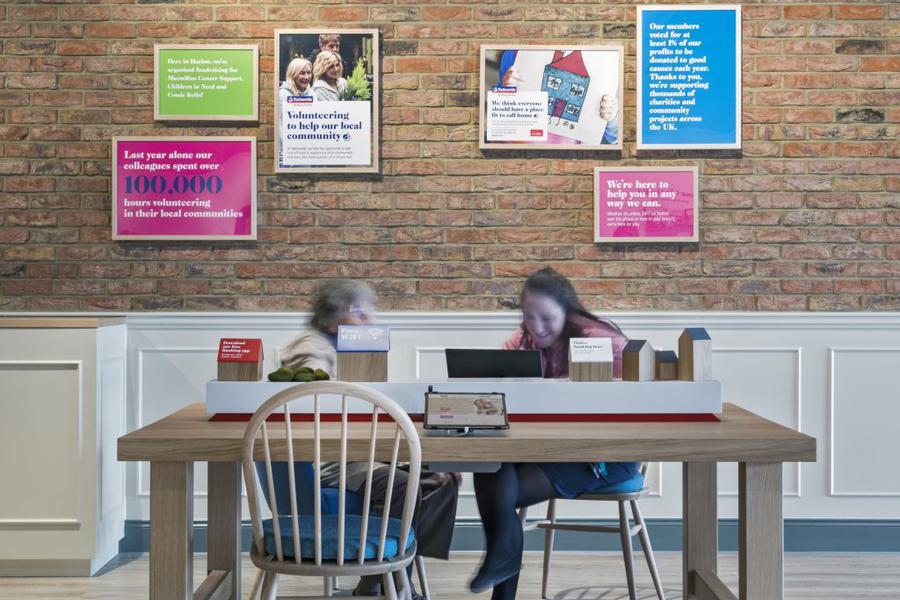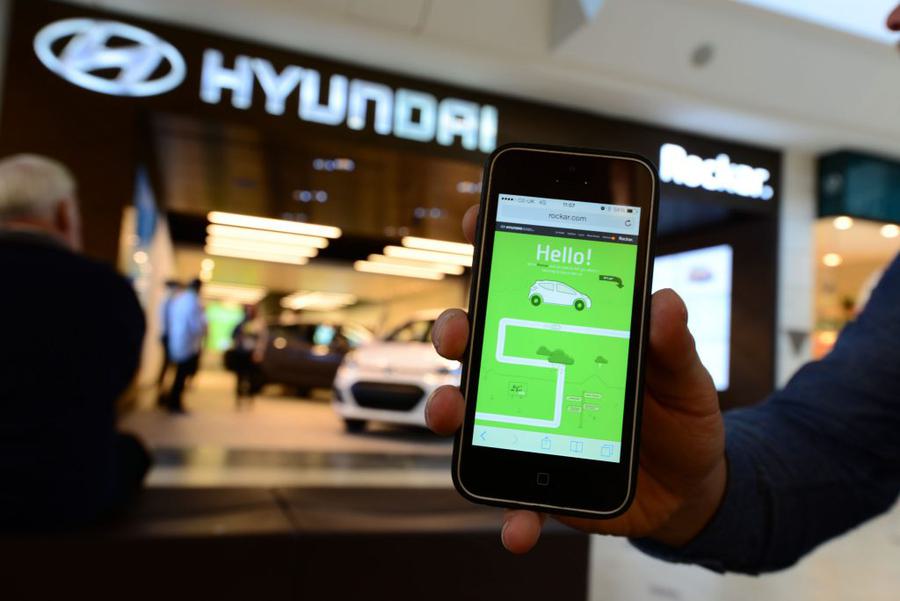6 ways to engage customers in an increasingly contactless world
With shifting patterns in consumer behaviours, we’ve identified some key challenges that brands need to tackle in order to stay relevant.


With shifting patterns in consumer behaviours, we’ve identified some key challenges that brands need to tackle in order to stay relevant.


Money is the leading cause of stress in the UK
It may not be very British of us, but we need to start talking about money. Globally, there is an opportunity for brands to start different conversations about money in a way that directly aligns to their purpose in order to create relevant and emotionally intelligent experiences for their customers. First Direct has taken a step in the right direction with their Money Wellness initiative, but there’s still work to be done. With the NHS joining the conversation, money is increasingly being recognised as a key cause of anxiety - and the current pandemic is exacerbating feelings of unease and uncertainty when it comes to our financial stability.
Money is the leading cause of stress in the UK, with over a quarter of adults admitting they experience financial stress on a daily basis. Source: Perkbox Financial Wellbeing Survey
Customers are looking to businesses and brands to inspire better financial habits in future generations and help everyone take financial wellbeing as seriously as our physical and mental health.
By the age of 7 children have developed their attitudes and values towards money – and these are likely to stay with them for life. Source: Money Advice Service

Traditional banking is misaligned with today's consumers
The bigger story here is not just about ‘banking’, it’s about how we each experience any financial service provider, whether they support us, and how they make us feel about money and ourselves. These businesses were established to safeguard, reassure, educate and guide us through our personal interactions and relationships with money. Why don’t we feel engaged with them, still?
“Traditional banking is misaligned with today’s consumers. Banks think about their products; people think about how they’re treated. Banks think about how they can profit; people think about getting a rewarding deal. Banks think about economic value; people think about personal value.” Source: Accenture report on financial mindsets
We’ve identified three key challenges faced by the financial services industry, each with suggested solutions of how brands can combat these difficulties:
When your sector is overshadowed by distrust and bad behaviour, you have to decide to stand out with deeds, not words. HSBC were forced to step away from their title of ‘The World’s Local Bank’ after a spate of global closures led to a 25% drop in brand value. The bank was forced to reconsider their purpose in order to prove to customers that they were more than just a slogan - and their ‘Together We Thrive’ campaign and accompanying identity refresh earlier this year has allowed them to do just that, winning back trust in the process.
In the competitive, fast-paced world of fast-fashion, TOMS’ one-for-one model cut through with its charitable retail offer. The model has inspired other businesses from toothbrushes, optical and skincare all the way through to books and even the humble toilet roll. Some brands will go as far as telling you not to buy their products if it chimes with their values – as Patagonia marketed with an anti-Black Friday campaign.
Brands within the finance sector should take note - give your customers something to align with, rather than potentially alienating them with empty words they don’t believe in

Customers are increasingly cynical
Customers are increasingly cynical of large brands appearing in their neighbourhoods without integrating, collaborating or tailoring to their local needs (or paying fair taxes). Brands who consult, listen and work with local communities build stronger foundations, earn trust and act out their values authentically.
Our work with Nationwide focused on its role within different communities and its customer experience. By bringing its purpose and values to life, the building society stands apart from the banks on the UK high streets - with the biggest differences being Nationwide's commitment to the human touch and pledge to bring new branches to local neighbourhoods where others are walking away.
Another great example of a local hero is Nike’s range of Community Stores that commit to hiring at least 80% of staff ‘store athletes’ from within 5 miles of the store, and give them volunteer time to support local community sports. Co-op food stores have repositioned its membership model, with customers able to buy a share for £1 – earning 5% own-brand cash-back incentives for themselves and 1% for their local community.
Instead of being figures of distrust and apprehension, there’s a huge opportunity for financial service brands to integrate themselves into local neighbourhoods and prove themselves as a valuable member of the community.

When customers have better tech (and higher expectations) than the brands they’re paying to interact with, they can be increasingly critical of the value and experience of the service.
Established brands can suffer with legacy tech issues as costly software and hardware needs to be updated en masse, while keeping their customers’ data secure. This is in stark contrast to their small, agile and tech-enabled competitors starting fintech revolutions with a clear purpose, digital-first services and an always-in-beta mind set.
This David & Goliath comparison is tough; customers want both the governance and high standards but also smart and responsive services that feel modern and consistent across all customer touch-points.
We trust people and brands that speak like us
Financial jargon can alienate first-time customers, or even existing customers who are too embarrassed to admit what they don’t understand. Yes, we can Google everything, but we trust people and brands that speak like us – on a level with empathy for new language and processes.
Vitality health and life insurance appeared on the market like a breath of fresh air, changing the conversation from cautious, legal and dusty to proactive, customer-controlled and vibrant. Benefits became tangible and the services lifestyle-relevant. Similarly, Aviva car insurance got families talking about the benefits of “black box” devices that monitor how you drive and reward best practice – rather than having to differentiate with renewal prices and deals, they made data useful and fun.
Looking further afield, Netflix and Spotify are masterful users of data. They engage their customers with data-led adverts, serve up personalised suggestions based on big data algorithms and differentiate from mere commodity and catalogue with their addictively delightful and effortless user experience.
And in terms of making an intangible product feel more real, Shopify is a great example - the e-commerce platform recently launched their first flagship in LA as a hub for entrepreneurs to gather, work, receive business advice and even complete all-important life admin tasks such as printing.
By tailoring the experience to the customer and interacting with them in a way they relate to and understand, brands can forge far deeper and more meaningful connections.
The robots will take all of our jobs. They will be more productive, punctual, with more customer knowledge than your employees of the month. Until then, you can use tech to increase efficiency, free up time and allow your people to shine.
Our work for O2 had customer service and a human-led experience at its heart. Each new employee was taken through a bespoke training programme that was inspired by the store’s individual city and the people living there. Nurturing emotional intelligence and the ability to excite and inform customers, the programme ensured that staff could provide a much more memorable in-store experience.
When embarking on our Customer Experience transformation project with Knight Frank, highlighting the property brand’s human side - their people, their skills and how they can help you - was key to the overall vision. In branch and in customers’ own homes, we introduced partners as ‘a voice you can trust’ in order to humanise what can seem transactional and impersonal, showing their local insights, recommended partner businesses, schools and other lifestyle considerations when thinking about a property search. Greater emphasis was also placed on the role of hiring, training and retaining Knight Frank’s most valuable brand asset: its people.
Do what the robots can’t and utilise the strength of your people as brand ambassadors to offer your customers a face-to-face experience they will truly value - more so than ever after the isolation of lockdown.

No, not Elon Musk or Jeff Bezos and their intergalactic future-preneurialism. The physical space that can, through no fault of your own: be costly, no longer fit for purpose, in the wrong part of town or simply uninviting to a demanding customer. Brands that recognise the need to behave differently in different spaces in order to stay relevant are able to maximise their return on investment and create headlines at the same time.
Stop seeing a costly space, start seeing a living billboard for your brand vision and values. What can you do and say here that helps your customers (and non-customers) double-take your brand? Focus on your target customers, but remember secondary and halo customers still benefit and crucially recommend you to others.
Tech repair brand iSmash’s strategy of being positioned by busy commuter hotspots means their expert, express service is constantly on view and the brand is front of mind when disaster strikes and a speedy repair is required - proving format and location can be just as important as communications and in-store experience.
Even when these spaces close, or move on, they have created a warm and lasting memory in the customer, or future-customer, as well as having tested new ways to interact and learn from feedback. Could you rethink your location strategy to be where your customers need you?
Think about how your total offer can be experienced in different space constraints - better to do fewer things well, than all things with compromise. This is starting to become evident in high street banking, with mobile (on wheels) remote community solutions, tailored convenience-led small formats and high footfall experience flagships in major cities and emerging neighbourhood destinations.
Automotive brands are continuing to experiment with formats that bolster their existing network and offer a viable alternative to the industrial estate experience, appearing in high footfall malls and high streets and adopting a fashion and lifestyle approach to shopping and browsing. Our work with digital platform Rockar has helped put Hyundai, Jaguar, Ford, Mitsubishi and Land Rover customers in control of the car-buying experience, with ultimate convenience and ‘add-to-basket’ ease.
Google’s pop-up Hardware Stores in New York & Chicago were compelling examples of experiences that placed product in context to inspire a lifestyle. Rather than being seen as a ‘tech store’, Google’s alternative format displayed products in dedicated interactive zones for Work, Life and Home, making the offer far more tangible and desirable, and thoughtful touchpoints and mini experiences throughout the space brought the design story and creative potential of each product to life.
One size doesn’t fit all - consider how you could use your space differently to talk about your brand and your offer in new and interesting ways.

What’s challenging you and your customers? If you’d like to think about your challenges, value-add customer experiences, or reframe your barriers and benefits as opportunities in order to become an engaging brand, we’d love to hear from you.